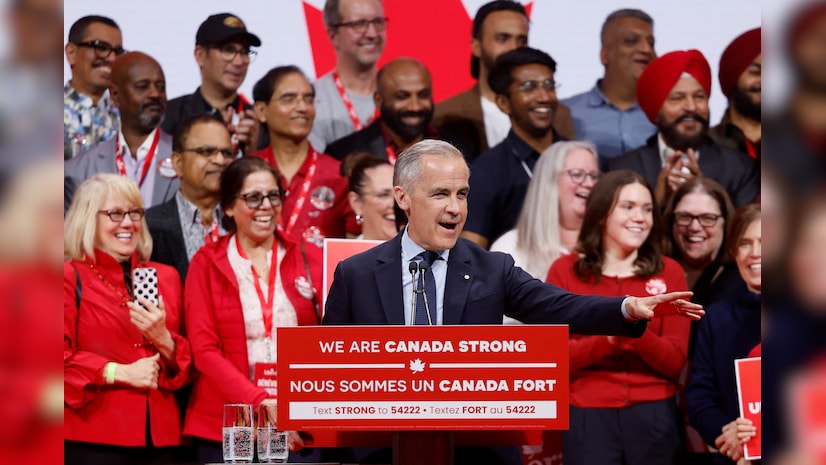Canada’s recent election has ushered in a new Liberal government led by Mark Carney, signaling potentially significant shifts in immigration policy. For those considering immigrating to Canada after the election, understanding the nuances of these changes goes beyond simply reading the headlines. The landscape is evolving, and a critical look is needed to truly grasp the implications for your immigration journey.
What the New Mandate Means for You
While the broad strokes involve adjustments to immigration levels, the real value lies in understanding the why and the likely how these changes will be implemented, and critically, who might be most affected:
| Policy Area | Previous / General Direction | New Government’s Direction / Focus | Potential Impact / What it Means for Applicants |
|---|---|---|---|
| Permanent Resident Levels | High targets, increasing pace seen as “unsustainable” by the new platform. | Stabilize admissions at < 1% of population annually beyond 2027. (Current targets 2025-2027 already below 1%). | Pace may moderate in the long-term; emphasizes meeting current targets. Continued competition for limited spots. |
| Temporary Resident Levels | High growth, reached ~7.25% of population. | Reduce temporary residents to < 5% of population by end of 2027. Achieve through transition to PR or departures. | Stricter controls on new permits (study/work). Increased pressure/focus on temporary residents transitioning to PR or leaving. May impact PGWP/SOWP eligibility further. |
| Francophone Immigration | Existing targets (8.5-10% outside Quebec by 2027). | Increase target to 12% outside Quebec by 2029. | Significant opportunity for French-speaking candidates. Clear political will to boost these numbers. |
| Economic Immigration | General focus on skilled workers across various streams (Express Entry, PNP). | Update Global Skills Strategy, focus on attracting specific talent (especially from US), high-growth sectors, credential recognition. | May become more targeted and competitive for general profiles; potential expedited pathways for specific high-demand skills/industries. Need to align with economic priorities. |
| Processing Times & Backlogs | Significant backlogs and delays reported. | Commit to modernizing system with digital tools to reduce delays and clear backlogs. | Intention to improve, but current backlogs remain. Digitalization is a process, not an overnight fix. Applicants should still anticipate potential wait times. |
| Policy Driver / Focus | Seen as largely driven by labour needs. | Balanced approach: Labour needs + explicitly addressing infrastructure strain (housing, services). | Decisions will be heavily influenced by capacity constraints. Policies tied more explicitly to infrastructure development pace. |
| Border Security / Integrity | Ongoing processes for screening, enforcement, asylum. | Enhance border enforcement, tighten visa screening, improve enforcement against fraud, timely removal of failed asylum claimants. | Potential for more rigorous application scrutiny and longer processing for certain cases involving security or fraud concerns. |
Permanent Resident Targets: A “Stabilization” with Caveats:
The commitment to keeping permanent resident admissions below 1% of the population annually post-2027 isn’t a drastic cut from the current targets (395k in 2025, 380k in 2026, 365k in 2027). However, framing it as “stabilization” acknowledges the previous pace was deemed “unsustainable.” This language is crucial – it suggests a more cautious approach moving forward, potentially making future increases less likely and emphasizing the importance of meeting current targets consistently. For applicants, this reinforces the need to ensure applications are robust and align perfectly with current program requirements.
The Temporary Resident Crackdown: More Than Just Numbers:
The target to reduce temporary residents to below 5% of the population by the end of 2027 is a direct response to public pressure regarding infrastructure strain. This isn’t just about capping new arrivals; it implies a stricter stance on permit renewals and potentially more challenging pathways to permanent residency for those already in Canada on temporary status. Expect continued scrutiny on programs like the PGWP and SOWP. If you are currently a temporary resident, understanding the refined pathways to PR and the potential for stricter renewal criteria is paramount.
Francophone Immigration: A Clear Growth Area:
The increased target for francophone immigration outside Quebec to 12% by 2029 is a strong, clear policy direction. This isn’t a subtle shift; it’s an explicit invitation for French-speaking candidates. If you have French language skills, this presents a tangible advantage that should be strategically leveraged in your application.
Economic Immigration: A Targeted Approach:
While the Global Skills Strategy update and focus on attracting talent (especially from the US) sound promising, the devil is in the details. How will “high-growth businesses” be defined? Will processing truly be faster amidst potential backlogs? The focus on credential recognition is positive, but the implementation speed remains a critical factor. Economic immigration will likely become more selective, prioritizing specific skills and sectors deemed vital for the Canadian economy. Simply having a skilled background may not be enough; strategic positioning within the application is key.
Navigating the Indian Applicant Landscape:
The news acknowledges the significant Indian community and the potential for mixed outcomes. While existing temporary residents might see clearer pathways to PR, new applicants could face stricter quotas and higher financial requirements. This isn’t about deterring Indian immigrants; it’s about managing volume and ensuring applicants meet higher standards. If you are an Indian national considering Canada, expect a more competitive and stringent application process.
Digitalization and Backlogs: A Promise Facing Reality:
The commitment to using digital tools to reduce backlogs is encouraging, but the current reality of significant delays for many applicants cannot be ignored. While the intent is to improve processing times, the sheer volume of applications and the complexity of the system mean this is likely a long-term goal, not an immediate fix. Applicants should still anticipate potential delays and plan accordingly.
Why “Good Enough” Won’t Cut It Anymore
In this evolving landscape, relying on outdated information or generic application strategies is a significant risk. The margin for error is shrinking. The new government’s focus on “stabilization,” stricter controls on temporary residents, and targeted economic immigration means that a nuanced, expertly crafted application is no longer a luxury, but a necessity.
Understanding the spirit behind these policy changes, anticipating how they will be applied in practice, and strategically positioning your profile requires in-depth knowledge and experience.
Take Control of Your Canadian Future
Don’t let uncertainty derail your dreams. The changes in Canadian immigration policy necessitate a proactive and informed approach. Our team specializes in navigating these complexities. We provide high-value, personalized consultations that go beyond the basic information, offering critical insights and tailored strategies based on the latest developments.
Invest in clarity and confidence. Schedule your paid consultation with us today to understand exactly how these changes impact your unique situation and develop a robust plan for success.






0 Comments